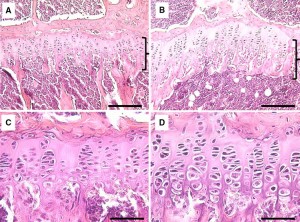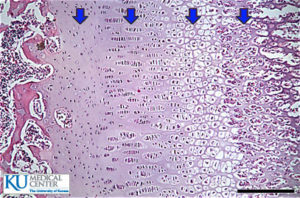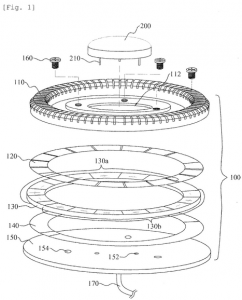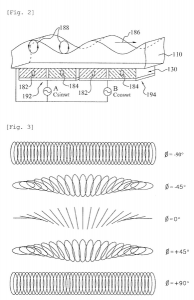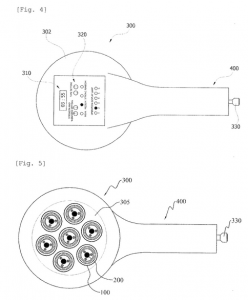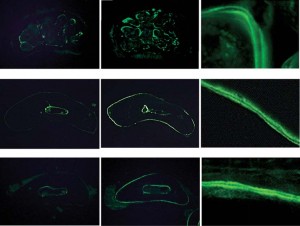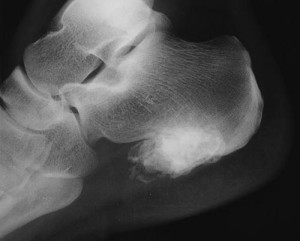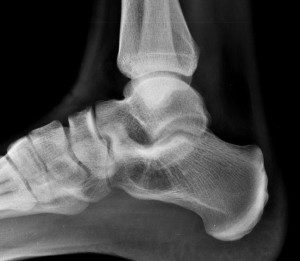The chemical that would make adults taller has been found – game changing post!
 This finding I had more than 3 months is what I had been alluding to when I told a few people that there was something big coming. The news about Teplyashin’s team was big, but this one seems to have a much more immediately, more practical effect. This post is what I was alluding to months ago. However, there are some key issues which we need to get cleared before we tell you guys what it is –
This finding I had more than 3 months is what I had been alluding to when I told a few people that there was something big coming. The news about Teplyashin’s team was big, but this one seems to have a much more immediately, more practical effect. This post is what I was alluding to months ago. However, there are some key issues which we need to get cleared before we tell you guys what it is –
Disclaimer:
- It is not a pill or chemical you can take orally. It requires that you inject it into a certain area of the body.
- It is the main critical component, but one would need at least 2 other compounds combined with it, all injected using syringe and needle sequentially spaced out throughout a day to work.
- You can’t buy this compound easily, and I haven’t been able to find any places which sell it to regular non-lab people. – I am sure that here is some lab or factory in India or China which makes a synthetic version of this chemical but even the researchers working day after day with this chemical might not understand how effective it could be.
- A minority of adults will notice results (Just like always.) Most people will not notice results, except maybe just 1 cm of increase. However, that 1 cm is still enough to make a validation of the scientific theory/proof of concept.
- The results takes about 2-3 months total to really show.
- Expect on average about 2-3 cms of permanent height increase, but some people will get around 5-6 cm, depending on their skeletal structure.
- It works for a certain percentage of the population. I have not been able to find a sufficient reason why the chemical seems to increase only a small percentage of the human population.
- The amount of increase among adults has been reported to be as high as even 3-3.5 inches. (search on google for older posts I wrote where I tried to document every instance where some women mentioned it)
- It affects the body in a way which even I did not even consider or think of before. The body’s anatomy sure does interesting things. This claim is real, and it makes medical and anatomical sense.
- The chemicals (all 3) would need to be injected while at the same time another body contouring technique is being applied to the body.
- The increase in height would be permanent, at least in terms of a 20-30 year frame time, before people naturally start to shrink again at old age.
About two weeks ago I had been hinting at some type of discovery which I felt at the time was the biggest discovery that was made for our endeavor. I even wrote to Tyler saying that I had found something that was extremely close to our holy grail. Some people got curious and started to ask in the subsequent posts just what was this game changing post about. I alluded to it in the post about Calcium L-Threonate, and the posts about Russian Plastic Surgeon and Stem Cell Researcher Alexander Teplyashin’s research. When I wrote the two posts about the fact that his research team had succeeded in getting the stem cell technique to work successfully on lab sheep/ram leg bones, maybe some readers thought that the post was the big news. That was not it, even though it was just as earth shaking in its implications.
I wanted to post it now, because it was worth sharing to you guys. Like I always have said, I will share everything and let you guys in on all the secrets that I have found in the biomedical databases on the internet. I am a businessman but this thing, I figured that it was just not worth it to charge you guys.
I put this information public for the others. Some of you guys are young teenagers in the Philippines, India, Pakistan, who don’t have the type of money to pay for such information. Most probably didn’t come from a rich Singapore family who has millions to pay for limb lengthening surgery like Nick, who I interviews on the 11th pod cast episode. You want a miracle drug, which we can never give. This is the most effective chemical that I have ever found, even more effective than glucosamine sulphate, which had sort of gone viral in some ways (That post has already been viewed over 100,000 times)
So what is it?
Relaxin
So how can this chemical be validated to work on increasing height in people past complete epiphyseal cartilage ossification?
This was a compound which I and Tyler had both sort of conjectured about before but did not go deep into checking it out. The start of this saga started when I had made quite a few posts indicating that a small subset of women who went through pregnancy noticed that they started to notice other people becoming shorter. Tyler immediately guessed it was Relaxin and the citation by him on one PubMed study on how the pelvic bone structural alignment in cows which went through the 1st pregnancy did dramatically change seemed to only give slight proof. I agreed with him. However, more reports started to come in, maybe once every month with some mother or female writing in and giving the phenomena even more credibility.
I wrote another two full, detailed posts trying to explain the exact mechanisms on how the female body would end up longer even with relaxin, and the only explanation I could come up with was that the human female pelvic bone structural alignment also changed after the first or 2nd pregnancy just like heifers (female cows before ever going through their first pregnancy). If you just google the terms “pregnancy” and “height increase” into Google you would find those posts.
I decided to go back and really look at the compound after at least a dozen pregnant females came forth on online forums and claim that besides just the increase in feet and finger sizes during pregnancy, they noticed height increases, sometimes as much as even 3.5 inches in increases, over a span of 2-3 pregnancies.
That was when I stumbled upon a single Patent done, which hid from me and Tyler even after years of searching.
Refer to the patent below….
Method for remodeling bone and related sutures – Inventor: Dennis Stewart – Company: Bas Medical Inc.
Below are the other patent #s which are also associated with the idea/invention
The reason to have the patent filed multiple times is this. The practice of Patents is to file multiple patents for different countries for the same inventions. All the Patent numbers will essentially take you to the same patent.
In the abstract of the patent, the Inventors specifically says at the last sentence, and I quote…
“The invention further encompasses methods of modifying the height of a human subject”
It seems that this Dennis Stewart who has been researching the effects of Relaxin for over a decade (I checked his PubMed published papers) had filed the patent to protect the idea that Relaxin when administered to the bones can get them to grow. The bones have relaxin receptors.
So the million dollar questions is, “Why would this chemical work on human adults with fully fused growth plates?”
If people are hoping this compound can magically reopen their growth plates, it won’t do that. However, it has a very beneficial effect on all the tissue types we care about, epiphyseal cartilage, bone specific cells, and the ligaments that hold the bones together. In a certain context, the answer is yes it would work for even adults. How it works is much more interesting, which I will try to go into below.
My Personal Theory On Why Relaxin Can Make Adults Taller
In the last month, I have bought multiple books on joints and have been very lucky to find very cheap old textbooks in the local Salvation Army and GoodWill that is by my house. I picked up the Textbook “Joint Structure & Function – A Comprehensive Analysis – 4th Ed.” by Levangie and Norkin, which turns out to be one of those textbooks that people who go into Physical Therapy needs to read up on. I also started to read up on very old (early 20th century) medical textbooks and ideas which are now no longer practiced. In addition, I became very interested in the traditions of the practice known as Bone Setting, I remember seeing this documentary about this old Chinese Medical Practitioner in Singapore and/or Hong Kong who were able to fix and repair minor bone fractures and joint problems by moving bones and joints around. It reminds one of Rolfing and the Chiropractor practices today. After learning that the practice of bone setting is almost completely extinct, but used to be practiced by almost every single old civilization in the world, I asked the question whether the same bone setters who could fix bone breaks knew also ways to make joints more flexible. That is how I got into something known as Manipulation Therapy. I would purchase the old texts “Treatment by Manipulation” (by AG Tibrell FIsher) and further texts to increase my level of understanding on how joints work, and how they can be manipulated in a safe way.
By what I have read of so far, it seems that the modern form of Physical Therapy is derived from this early 20th century practice called Manipulation Therapy. When you start looking at what the authors say, they don’t base their massage/tissue manipulation techniques on chiropractor theory, which is subluxation theory. I haven’t gotten that far from reading the books but what I have been reading does seem to give the idea of using relaxing to increase the overall height of a person seem somewhat validated in theory. I do feel that my increased knowledge on the ways the joints are designed give me a more better understanding on how it is possible. Let me explain.
The Science Behind Relaxin
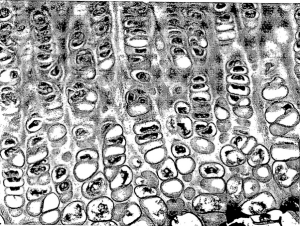 This is based on what is written in the patent by Stewart. Like so many other chemical compounds that is naturally produced in the body, Relaxin is an organic compound, a protein, specially a peptide hormone. It’s overall 3-Dimensional structure is similar to Insulin and Insulin like Growth Factor (IGF), which we know can be used in children who are still developing to grow bone size. It is actually in the same family as IGF. Historically, it has been known only as a hormone associated with pregnancy. It is supposed to make sure the uterus remain stable but makes the breasts in the pregnant female grow larger. The chemical seems to target mainly the brain, reproductive organs, and the heart. In the last decade, other researchers have found that it has an even greater effect than previously believed.
This is based on what is written in the patent by Stewart. Like so many other chemical compounds that is naturally produced in the body, Relaxin is an organic compound, a protein, specially a peptide hormone. It’s overall 3-Dimensional structure is similar to Insulin and Insulin like Growth Factor (IGF), which we know can be used in children who are still developing to grow bone size. It is actually in the same family as IGF. Historically, it has been known only as a hormone associated with pregnancy. It is supposed to make sure the uterus remain stable but makes the breasts in the pregnant female grow larger. The chemical seems to target mainly the brain, reproductive organs, and the heart. In the last decade, other researchers have found that it has an even greater effect than previously believed.
There seems to be 3 different types of Relaxin compounds, or more specifically there are three different relaxin expressing genes. H1, H2, and H3 Relaxin, which are all very specific to humans.
(Side Note: One researcher found that the biomolecular chemical pathway of relaxin (cAMP pathway) can be modulated by two G-protein-coupled receptors, LGR7 and LGR8. In the patent, the list of relaxin receptors are the following: LGR7, LGR8, GPCR135 and GPCR142.The pathway used by Relaxin is different from the Isulin ligands. In certain mammal species, during the actual act of labor in pregnancy, the relaxin is released to make the vaginal tissue relax aka expand for passage of the baby’s head. However, that does not seem to be relaxin’s role in cows and humans.)
I quote from the patent…
“Another advantage of the present invention is that the target bone may be remodeled, repaired, removed or grown depending on the type and need of the bone”
It seems that relaxin can be used to repair bone fractures, but we have already found multiple chemical compounds that can already do that. It’s pro-osteogenic effects however may mean it can have other uses than what we want it for.
In the next line, he writes “Similarly, a bone may be grown in size or height by administering relaxin“
In the pictures of the patent, Stewart was able to identify the relaxing receptor in the epiphyseal plates (specifically the hypertrophic layer) through staining. Finding it not just in cartilage tissue, the chemical was found also in the bone cell types: osteoclasts, osteoblasts, and osteocytes.
He notes that the change in height when you administer the Relaxin can be as small as 0.2 cm to as much as even 30 cm, which is nearly a full feet in height increase, which I am not convinced is possible.
Here is where the inventor really shows something interesting. Supposedly the invention would work for people who range from 1-30 years old, although it is suggested to work on people in the 8-18 range. That makes sense since having growth plates would always work better. I am not going to put words into this person’s mouth but maybe his willingness to put the age range up to 30 means that he has speculated that the chemical would be good for people even at fully adulthood to make their bones bigger. Of course, I don’t think it is the long bones like the femur and the tibia he is referring to, but the non-long bone types in the skeletal structure. That is what I believe the increase in height will occur in.
The other amazing thing is that Dennis understood that beyond cartilage and bones, relaxing has beneficial effects on sutures, which is just another term used to describe the area where bones meet. Remember that besides the long bones in the human body, there is also the irregular bones (pelvic and vertebrate) which can grow.
This is where I think the holy grail lies. I believe that with the right relaxin formulation (H1, H2, and H3) administered to certain areas close to the sutures of the human body, ie the pelvic joints and the sutures on the sides of the intervertebral discs, you would be able to increase a person’s height by making the irregular bones in the skeletal structure grow larger volumetrically by adding more layers on the bones.
If we combine the intravenous injections of relaxin formulation with manipulation techniques aka physical therapy to straighten out the lumbar-pelvic area, what would be seen would be a permanent height increase in a large percentage of the patients.
I had tried to guess how the female body during pregnancy actually changes in standing skeletal posture to even allow for an overall height increase. I don’t want to go too deep and re-explain something I said before so please refer to the post “How Pregnant Women With Ossified Epiphyseal Cartilage Increase In Height” for more explanation. Remember, it is a huge leap in theory and basically just a personal, amateur level guess on what is happening underneath the skin.
The other big question to try to answer is…
“So why do most women during pregnancy not experience any height increase, but only a small minority of women do?”
That question, I can’t answer with a reasonable, scientific answer.
Here is one guess: I once proposed before that it is possible that a small percentage of people, but most especially women never have fully fused growth plates. Those growth plates are only seen in X-Rays. You can’t look at an adult person and tell if they have any cartilage left at the ends of their long bones. We all have to assume that because they are an adult in their late 20s that they have fully finished growing taller, but no one except superman with his X-ray vision would be able to truly validate that idea by looking to see no more cartilage/growth plates. If that is true however, then it would then invalidate the entire premise of this post, which I am willing to accept. Logically, then all these claims made by women that they grew taller during pregnancy in their 20s and even 30s is just because their growth plates were never completely ossified. Of course, that would mean that we need to ask a completely different question, which is why it is that a minority of people seem to have unfused growth plates so late into their life.
If we assume that the first guess is not true, then the next guess on why only a select few women see any increase is that some women have irregular vertebrate alignment aka minor scoliosis which was never fixed until pregnancy, where the ligaments were relaxed enough to get the curved vertebrate to even out and become symmetrical.
I have noted that there does seem to be a weak positive correlation between above average females who notice that they grew taller during pregnancy. It might be that certain women who have already been suceptible to tall stature have bone relaxin receptors particularly sensitive to the relaxin, which is so similar in function and form as the insulin and the IGF types.
What a person should expect to really look for in terms of a signal is to see if their feet is getting bigger. The phenomena of pregnant women’s feet becoming bigger is well documented, which shoe sizes often increasing as much as by 2 shoe sizes. If the person taking the compound notices that their feet has started to increase in size, then it is a rather good physiological signal that the relaxin is working maybe also on the torso vertebrate bones and pelvic bones as well. So if we decide to start to inject our pelvic region and lower back with relaxin, we should be checking the size of our feet weekly for any changes.
How can a normal person obtain this chemical compound?
So far, I have not looked into how a person can get their hands on it yet, at least at a reasonable price. What I do know is that almost anything you want, some company in the world is willing to make it. (I know of one company based in Iran where the people there are chemists, CNC machinists, and 3D Modeling artists who can formulate any type of chemical or 3D Print any object that you want, as long as you can pay the upfront manufacturing costs to get the raw materials) For example, I was able to get modafinil from India and after just a quick search. On Alibaba.com, I found that there is at least one company based in China which is selling Human Relaxin. For just 1 box which probably contains less than 10 mL, we are looking at $300-$500.
In comparison, during pregnancy the amount of relaxin that is produced in various parts of the body and then released through the system might be much more in magnitude. However, we could also make the case that when it comes to giving kids shots of growth hormone, which lasts even years, the amount of HGH that is injected is not that much, maybe just 10-20 mL if even that much. Remember that we did look at the amount of endogenous HGH released by the pituitary gland in growing kids even at the most optimal time, during deep REM sleep is still not that great in quantity.
That could mean that if the stuff we did buy from the Alibaba sellers of what is supposedly the synthesized relaxin is around the right amount, we would still be paying around $500 for each shot of the ligament loosening/bone increasing/growth plate increasing compound.
In Conclusion
I had always thought that the only ways to increase bones in length or by volume was by turning the bone tissue into cartilage, or getting whatever is left of the cartilage aka the articular cartilage surface to expand in thickness.
It seems that there is a third approach which I had not even considered, and that is by loosening the ligaments, tendons, and other connective tissue in the body. I understand that the ligaments are not structurally strong against gravity like bone or cartilage so it can’t provide the push to hold the body higher in elevation relative to the surface of the earth aka make the body become taller, but for a larger percentage of the population, a loosening of the ligaments around the lower back and pelvic region means that the bones will be readjusted in a way which will make any hidden skeletal abnormalities and angular bone alignment become aligned. The result is that those people will notice height increase. Remember, the patent’s title is Method for remodeling bone and related sutures, and when we actually look at how orthopedic surgeons define sutures, they refer the term “suture” to mean the spaces where bones meet. This compound has dramatic effects in the suture, which often means the space between the bones can be expanded.
I propose that along with this chemical (Relaxin Formulation), they should combine it with the following…
All of the chemicals have pro-chondrogenic capabilities. The idea is to get all of these compounds together and get the growth factors to be injected intravenously in series at the same time a physical therapist is using manipulation therapy on the lower torso region.
However, relaxin will be the real key to the entire process. It is relaxin which will make the pelvic region malleable enough for the modern day “bone setter” the physical therapists and maybe even the chiropractors to create a bone structural alignment that will result in permanent height gain. Since Relaxin has receptors in the cartilage as well as in all of the major bone cell types, it has a additive effect.
How Much Confidence Do I Have In This Chemical and It’s Effectiveness? Or, to put it another way, would it definitely work for permanent height gain that is noticeable, maybe 2 inches?
First, I am not a person who has studied the chemical for over a decade like the Inventor Dennis Stewart. I am also not him who decided to spent maybe even $2000-$4000 to pay to have this “invention” patented, which he did working for Bas Medical Inc. For a normal person/non-corporation to file a patent which would cost them thousands of dollars means that they are either extremely confident in what they have found/discovered/created or they have maybe too much money on their hands. As for myself, I am an amateur researcher who reads a lot of texts on joint mechanics and orthopaedics. Orthopaedics is sort of like a calling for me, which has allowed me to also study and read up on the cutting edge of research in cancer research, stem cells, and gene therapy, the biotech hot topics of the last few decades. If I could do things over again, I would have maybe chosen Pre-Med for my undergraduate studies, got into Med School, and tried to do really well in the Step 1 (USMLE Part 1) to get into the ultra-competitive orthopedic surgery route, which has been found to be the best paying medical sub-speciality where surgeons often earn around $700,000 per year in earnings.
I am not a doctor by training, but trained as a type of biochemical engineer who worked in labs looking for AIDS vaccines and Plastic Surgery techniques. Based on my personal research in the last 2 years doing this type of stuff, I have extreme confidence that using the relaxin formulation with other pro-chondrogenic growth factors combined with a bone & joint manipulation specialist (you can choose chiropractor, Asian bone setter, physical therapist, rolfing, or maybe even deep swedish masseuse) there would be a noticeable increase in height for the person which will be both permanent and noticeable. I am not going to say that everyone is going to get results, more like a minority, but I would guess that 10-20% of everyone who combines the chemical with the body manipulation will see results after 2-3 months.
——————————–
Side Note: I was not not the first amateur height increase researcher to notice this phenomena. The person who back in the 2007-2010 time who created the www.HeightEffects.com or HeightFX grow taller formula (Website is now gone) also noticed the phenomena and made a post to some Mom forum asking for more information on how they grew taller but never got a response from them. I remember looking at the WayBack Machine at the content on the Height FX website and being amazed at just how clear and knowledgeable the person was on what would work. The guy who sold the bogus formulation understood all the easy, traditional paths on height increase and tried to figure out how pregnant women were getting taller but didn’t seem to push further into the research, so he never got as far as us.
——————
For more information on the types of relaxin formulations that have already become patented, refer to the following patent #s.
- 5,945,402
- 5,451,872.
- 6,200,953
- 5,811,395
- 5,911,997
- patent application Ser. No. 09/846,149.
- A process for producing relaxin is described in U.S. Pat. No. 5,759,807.
- A process and compositions for the isolation of human relaxin is described in U.S. Pat. No. 5,464,756.
- A method of chain combinations for human relaxin or analogs thereof are described in U.S. Pat. No. 4,835,251
—————
I am reminded of this lecture given by Guy Kawasaki, one of the evangelists for the late Steve Jobs. He once said something which I still remember on how really great scientists find really breakthroughs in science.
When they see something in their experiments and data, which is not consistent with the other results or lays outside the trend line, instead of saying that the data point is due to normal error variance and removing it to make all of the other data points look smooth and linear, they say instead “hmmmm, that is interesting” and proceed to figure out why the outlier point in the data set does not agree with the others. That is the mark of a great scientific researcher. That is what happened in this case. The phenomena of pregnant women who end up taller was such a unique data set point, that I was forced to look into it and see why it was such an outlier. The outlier cases, as Malcom Gladwell states, is where the really interesting things lie.
Sure, there will always be some researchers who won’t be doing groundbreaking work, who are needed to repeat the experiments already done to validate the original researcher’s results, but it seems like these days, there are just too many Ph. Ds that are coming out of graduate school who is not doing any real research.
Is it because of all of the easy questions and obvious corollary conclusions have all been discovered, and all of the low hand fruit have been plucked?
Is it just too hard for a single person to figure out something revolutionary in nature anymore? Maybe there will never be another phenomena like how Einstein wrote 4 brilliant physics papers back in 1904, all of which would have been good enough to win a Physics Nobel Prize, which changed the very way we view the world.
It could be, since the sciences have become much more vast in scope and diverse. For example, we can look at the field of mathematics. Back in the late 19th century, the PolyMath Henri Poincare was probably the last mathematician who was skilled enough to work in all of the mathematica field of his time. Even the great John Von Neumann 30 years later when asked just how much of the current mathematical literature he was able to work on, he only said 26%.
It may be too hard for even the modern Fields Metalists to dig deep enough to find real gems, but for genetics, and biotechnology, I think even the amateur research like us can make some startling conclusions. So I say, be Alice and go down the rabbit hole, and see where it takes you.
You look at the results which don’t make any sense, because that is almost always where the real discoveries lie. Last year (or was it two years ago), when the French and European particle physicists were studying the resultant projectile pathways of all of the quarks, leptons, muons, and neutrinos that came about from smashing atoms together at the LHC (Large Hardon Collider), trying to find evidence for and validate the the work done more than 50 years ago by Peter Higgs, Stephen Hawking’s mused that he secretly hoped that they would NOT find the higgs boson. The thinking is that if they did not find it, it would mean that the current Standard Model of Physics on how the sub-atomic particle interact with each other was incomplete, which meant that nature and the universe had something else up its sleeve. The last time naturalist scientists tried to tie the loose ends of physics together, back in the 19th century, trying to integrate E&M and Newtonian Classical Mechanics together, they opened the new realm of reality and existence known as quantum mechanics and radiation. This time, there was no new startling discovery, which would open a new branch of physics research. Alas, the existence of the higgs boson was quite conclusive up to a high percentage so it seems like for at least the standard model, all of the particles have been accounted for.
I view this post as the result of noticing that not all the data and information was fully conclusive. It was only found by looking for what is inconsistent and different from everything else.

